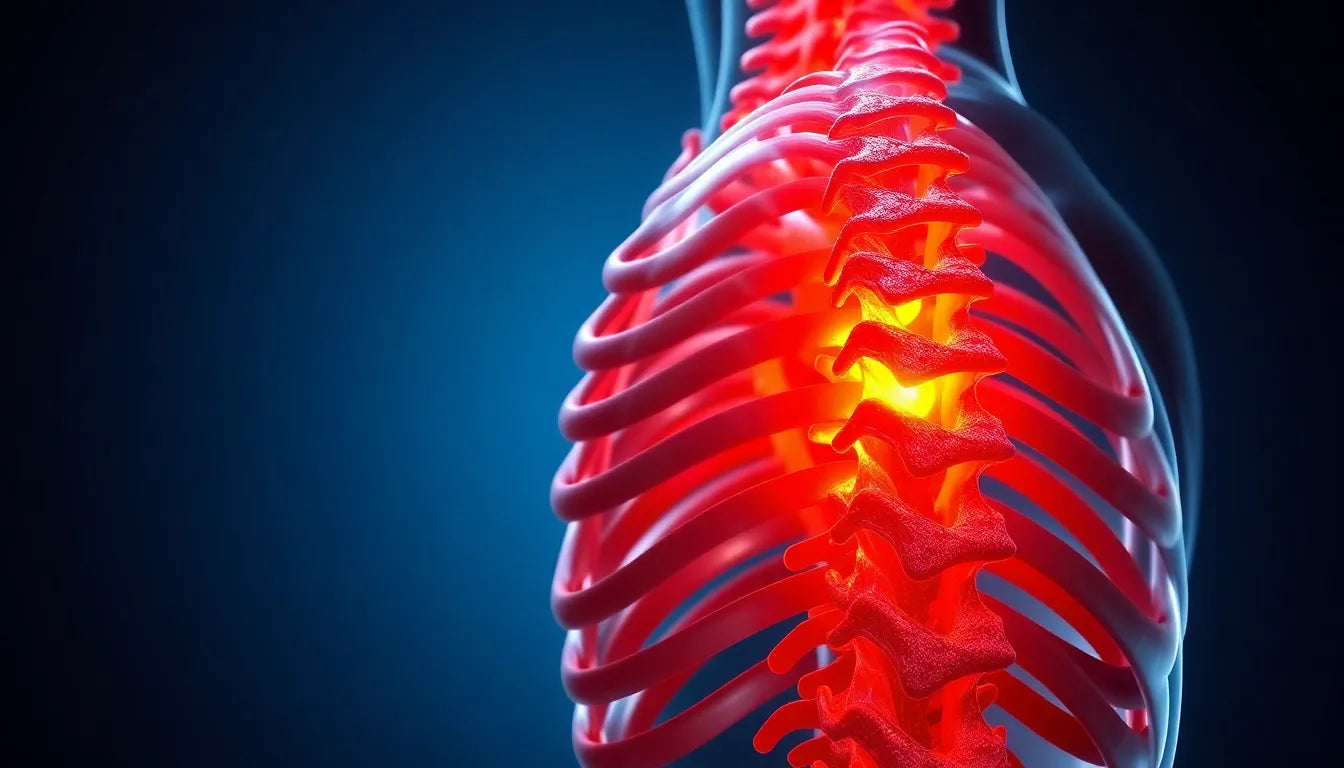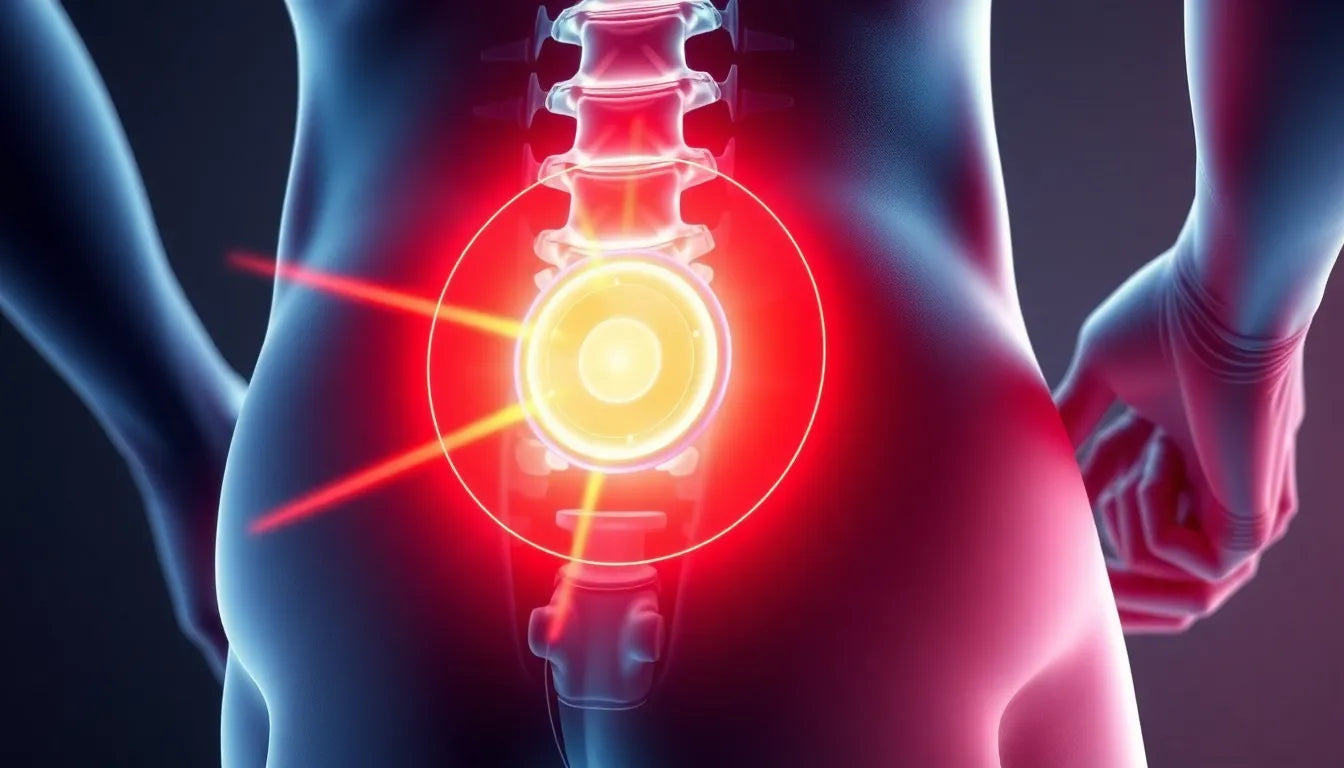Understanding how to heal a herniated disc is crucial for anyone experiencing the discomfort and limitations this condition can impose. A herniated disc, often referred to as a slipped or ruptured disc, occurs when the soft inner gel of a spinal disc pushes through a crack in the tougher exterior casing. This can lead to irritation of nearby nerves, resulting in pain, numbness, or weakness in an arm or leg. Common causes include age-related wear and tear, improper lifting techniques, and traumatic injuries. With its ability to significantly impact daily activities and overall quality of life, addressing a herniated disc effectively is a priority for many.
the importance of natural healing
The trend towards natural healing methods is gaining momentum as more individuals seek alternatives to surgery and medications. The body's innate ability to repair itself, when supported by the right treatments and lifestyle changes, is a compelling reason to explore nonsurgical options. Natural healing focuses on reducing inflammation, improving mobility, and strengthening the body's core muscles to alleviate symptoms and prevent recurrence. This approach not only addresses the root cause of the issue but also empowers individuals to take an active role in their recovery, fostering long-term health and well-being.
setting expectations for natural recovery
This blog post aims to provide a comprehensive guide on how to heal a herniated disc naturally, focusing on evidence-based methods that promote healing and pain relief. While the journey to recovery can vary from person to person, understanding the available options and setting realistic expectations are key steps in the process. From lifestyle adjustments and physical therapy to alternative therapies like acupuncture, the goal is to equip you with the knowledge and tools needed to manage your condition effectively. By exploring these natural approaches, you can embark on a path to recovery that aligns with your body's natural healing processes.
nonsurgical treatments for herniated discs
When it comes to healing a herniated disc naturally, nonsurgical treatments are often the first line of defense. These methods focus on relieving pain and supporting the body's natural healing processes without the need for invasive procedures.
rest and lifestyle adjustments
One of the most critical aspects of healing a herniated disc is rest. Giving your body the time it needs to recover is essential, as overexertion can exacerbate the condition. It's important to avoid activities that put undue strain on your back, such as heavy lifting or prolonged sitting. Additionally, maintaining a healthy weight can reduce the stress on your spine, while ergonomic adjustments in your daily routine, like using a supportive chair or practicing proper lifting techniques, can prevent further injury.
medications for pain management
For managing pain associated with a herniated disc, nonsteroidal anti-inflammatory drugs (NSAIDs) are commonly recommended. These medications help reduce inflammation and alleviate pain, making daily activities more manageable. In cases where pain is more severe, corticosteroid injections may be considered. These injections can provide significant relief by reducing inflammation around the affected nerves, as noted by medical experts at institutions like OrthoInfo (AAOS) and NYU Langone Health.
physical therapy: a cornerstone of recovery
Physical therapy plays a pivotal role in the natural healing of a herniated disc. It involves a combination of active and passive exercises designed to strengthen the core and back muscles, which are crucial for supporting the spine and reducing stress on the discs. Therapists often recommend gentle stretching and core strengthening exercises in the morning, followed by low-impact aerobic activities such as walking or swimming in the afternoon. In the evening, relaxation and flexibility exercises can aid in alleviating tension and promoting healing.
complementary techniques
In addition to traditional physical therapy, complementary techniques such as massage, heat and cold therapy, and acupuncture can enhance recovery. These methods, supported by resources like NYU Langone Health and Sciatica.com, help reduce muscle tension, improve circulation, and alleviate pain. Acupuncture, in particular, has gained popularity for its potential to relieve nerve pain and promote overall well-being.
surgical treatments: when to consider them
While nonsurgical treatments are effective for many, there are instances where surgical intervention may be necessary. Surgery is typically considered when symptoms persist despite exhaustive nonsurgical efforts, or when there is significant nerve damage or loss of function. Common procedures, such as microdiscectomy and lumbar laminectomy, focus on relieving pressure on the nerves by removing the offending part of the disc. As detailed by Sciatica.com and OrthoInfo (AAOS), these surgeries are generally successful in providing relief and improving quality of life.
In summary, the journey to healing a herniated disc naturally involves a multifaceted approach that prioritizes rest, lifestyle adjustments, and a combination of therapies. By understanding and implementing these evidence-based methods, individuals can take an active role in their recovery, potentially avoiding the need for surgery and fostering long-term spine health.
exploring alternative therapies for herniated disc healing
In addition to traditional nonsurgical methods, alternative therapies offer promising avenues for those seeking to heal a herniated disc naturally. Among these, acupuncture and chiropractic care are frequently discussed for their potential benefits in alleviating pain and promoting recovery.
acupuncture and chiropractic care
Acupuncture, an ancient practice rooted in traditional Chinese medicine, involves inserting fine needles into specific points on the body to stimulate healing and relieve pain. Some studies suggest that acupuncture can help reduce nerve pain associated with herniated discs, offering a complementary approach to conventional treatments. Similarly, chiropractic care focuses on spinal adjustments and manipulations to improve alignment and function, potentially reducing pressure on the affected disc and nerves. While patient experiences vary, many report significant relief and improved mobility after undergoing these therapies.
mind-body approaches
Mind-body techniques, such as yoga and meditation, play a supportive role in managing stress and enhancing overall well-being during recovery. Yoga, with its focus on gentle stretching and strengthening, can improve flexibility and support spine health. Meditation and mindfulness practices help reduce stress, which can exacerbate pain and hinder the healing process. Incorporating these practices into a daily routine can contribute to a holistic recovery strategy.
frequently asked questions
how long does it take to heal a herniated disc naturally?
The recovery time for a herniated disc varies depending on the severity of the condition and adherence to treatment plans. Many individuals experience improvement within a few weeks to a few months with consistent rest, physical therapy, and lifestyle adjustments. However, some cases may take longer, particularly if the disc is severely damaged or if complications arise.
can a herniated disc heal on its own without surgery?
Yes, a herniated disc can often heal naturally without surgical intervention. The body has a remarkable ability to repair itself over time, especially when supported by appropriate nonsurgical treatments. Surgery is typically reserved for cases where symptoms persist despite comprehensive nonsurgical efforts or when there is significant nerve damage.
what exercises should be avoided with a herniated disc?
Activities that place excessive strain on the spine or involve heavy lifting should be avoided, as they can exacerbate the condition. High-impact sports, such as running or jumping, and exercises that involve twisting or bending at the waist, like sit-ups, should be approached with caution. Instead, focus on low-impact activities like walking, swimming, or cycling, which are generally safer and can aid in recovery.
are there any dietary changes that can aid in healing a herniated disc?
A balanced diet rich in anti-inflammatory foods can support the healing process by reducing inflammation and promoting tissue repair. Incorporate foods like leafy greens, fatty fish, nuts, and seeds, which are high in omega-3 fatty acids and antioxidants. Staying hydrated and maintaining a healthy weight are also crucial for reducing stress on the spine.
how can I prevent a herniated disc from recurring?
To prevent recurrence, focus on maintaining a healthy lifestyle that includes regular exercise, proper posture, and ergonomic adjustments in daily activities. Strengthening core and back muscles through targeted exercises can provide better support for the spine. Additionally, practicing safe lifting techniques and avoiding prolonged sitting can help reduce the risk of future herniated discs.


















